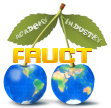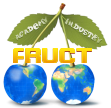You are here
Poster presentations management system
Laboratory of Intelligent Systems ITMO is a group of young researchers, united to study and develop applications of Semantics Web. The laboratory is a part of the computer systems design department where almost 800 students and 40 graduate students are trained. Many of them are involved in the laborotary projects. The main motivation for membership in FRUCT is to support educational and research projects of the laboratory and to provide its students with additional capability for personal and professional growth.
A poster presentation is one of the most widely used ways to present information on conferences or exhibitions. Our system can be considered as a shared repository with information about all posters, authors, organizations that would be accessible through either computers or mobile devices. The system uses semantic media wiki for storing information about posters and QR-code identification for extracting it. Using semantic annotations allows as to find relations between posters, authors, organizations and so on. Selection SMW as basic platform is preferable because the technology of creating seman- tic websites has become stable and clear during recent years. QR codes are also widely used providing user with links to the corresponding web resources. The most famous example is the Android market where one can download programs by clicking on QR-codes. One can also see the KIA system for car presentation which took place in 2009 Detroit Auto Show - they used QR code to provide more information about the cars presented on the exhibition. The base of the whole system is Semantic Media Wiki (SMW), a MediaWiki extension allowing to create semantic annotations or properties, in SMW terminology. SMW allows user avoid adding duplicated data again and again by setting semantic properties to one page and use them everywhere by querying. This makes the wiki looks like a data base and it is the main advantage of system. Semantic MediaWiki introduces some additional wiki-markup into the text of the articles which allows users to add semantic annotations to the wiki content. As they told in the introduction: while this first appears to make things more complex, it can also greatly simplify the structure of the wiki, help users to find more information in less time, and improve the overall quality and consistency of the wiki. The semantic wiki-specific elements we have developed for the of the of using SMW in our project are: Properties. Every word in poster content, which contains some critical fact can be marked as a named property, which have this word as value. Later it can be used in searching reqests, using ask-queries. The next properties are used: poster name, annotation, authors, organizaion, date, presenter name, presenter photo, keywords, PDF of poster. Ask-queries special SMW queries to the database allow to generate lists automatically and represent data in many output formants. Lists are usually consist of items selected by some properties. Such kind of lists guarantee actual contents because it updating automatically. As a rule, ask-queries are usually used in semantic templates. Ask-queries in our system build the list of all posters on index page and lists, selected according to some values: author, keyword, date, organizaition. Semantic templates special templates, that display information on a webpage. They use the semantic properties and ask-queries to search necessary data from database and to show on a webpage. Usage of SMW-templates allows to add computer-processable properties to all pages and hide it form users. Our system should have at least two templates. Posters template displays all the information about poster and generated QR- code. Lists template contain ask-query to display list of posters, filtered according to selected propery and its value. Some of the details about the templates are presented in the next section. Semantic forms analog SMW-template purposed on adding and editing information in database. SMW forms allows to get rid of writing semantic-coded content and provide user friendly input fields, checkboxes, dropdown lists and so on. Forms will automatically encode content to SMW-coded data and save it to database. The system is available through the web interface, each poster have its own URL-address. Using URL, visitor can browse it orpresenter can modify his poster through Internet browser. URL can be presented either in a text-format or QR-code, which should take place on every printed copy of the poster. This code if generated automatically according to a standard when a new poster has been created. Every mobile device having a QR-code reader automatically redirect mobile browser to URL, then visitor focus camera on QR-code printed on poster. Specially optimized mobile template applies to the system, when QR-code identification is detected.
Dmitry Mouromtsev - project leader, ITMO Yury Katkov - project manager, ITMO Pavel Smirnov - key developer, ITMO Web page of the team: http://ailab.ifmo.ru
FRUCT9 - Demo prototype evaluation FRUCT10 - Full featured version






















